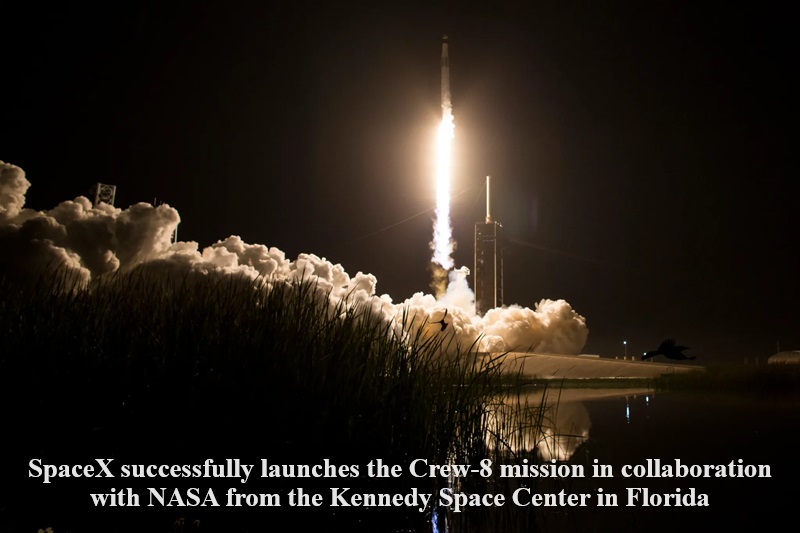
On Sunday, SpaceX achieved a successful launch of the Crew-8 mission in partnership with NASA from the Kennedy Space Center located in Florida.
Collaborating with NASA, SpaceX initiated the deployment of a crew comprising four individuals to the International Space Station aboard the Dragon spacecraft. This endeavor marked the third endeavor following the cancellation of the mission on two prior occasions due to adverse weather conditions. Notably, this launch represented SpaceX’s eighth mission rotation to the International Space Station in collaboration with NASA’s Commercial Crew Program.
The NASA astronauts assigned to this mission include Commander Mattew Dominick, Pilot Michael Barratt, and Mission Specialists Jeanette Epps and Alexander Grebenkin, the latter being a cosmonaut from the Russian Roscosmos agency. Barratt is poised to undertake his third journey to the ISS as part of this mission.
Anticipated to conclude in the fall, the quartet is scheduled to spend a duration of six months stationed at the International Space Station.
The launch of the Dragon spacecraft was facilitated by SpaceX’s utilization of their “reusable, two-stage rocket” known as Falcon 9. Upon detachment from the Dragon spacecraft, Falcon 9 is programmed to return and land at Cape Canaveral Space Force Station. Preceding the launch, administrators uncovered a minor air leak at the space station, as acknowledged by ISS Program Manager Joel Montalbano during a briefing for the Crew-8 mission. Montalbano clarified, “It’s not an impact to Crew-8, but I didn’t want anybody to be surprised.”
The mission commenced at 10:53 pm on Sunday, following assurances from engineers that a minor crack detected on the hatch seal would not impede the launch. The mission crew members celebrated from the ground as the first-stage booster detached from Dragon, propelling the spacecraft into space.
Over the course of their mission, the crew is slated to undertake in excess of 200 scientific experiments at the International Space Station, often referred to as a “floating laboratory.” These experiments are integral to long-term missions aimed at preparing humanity for extended sojourns in space.

Post Your Comments